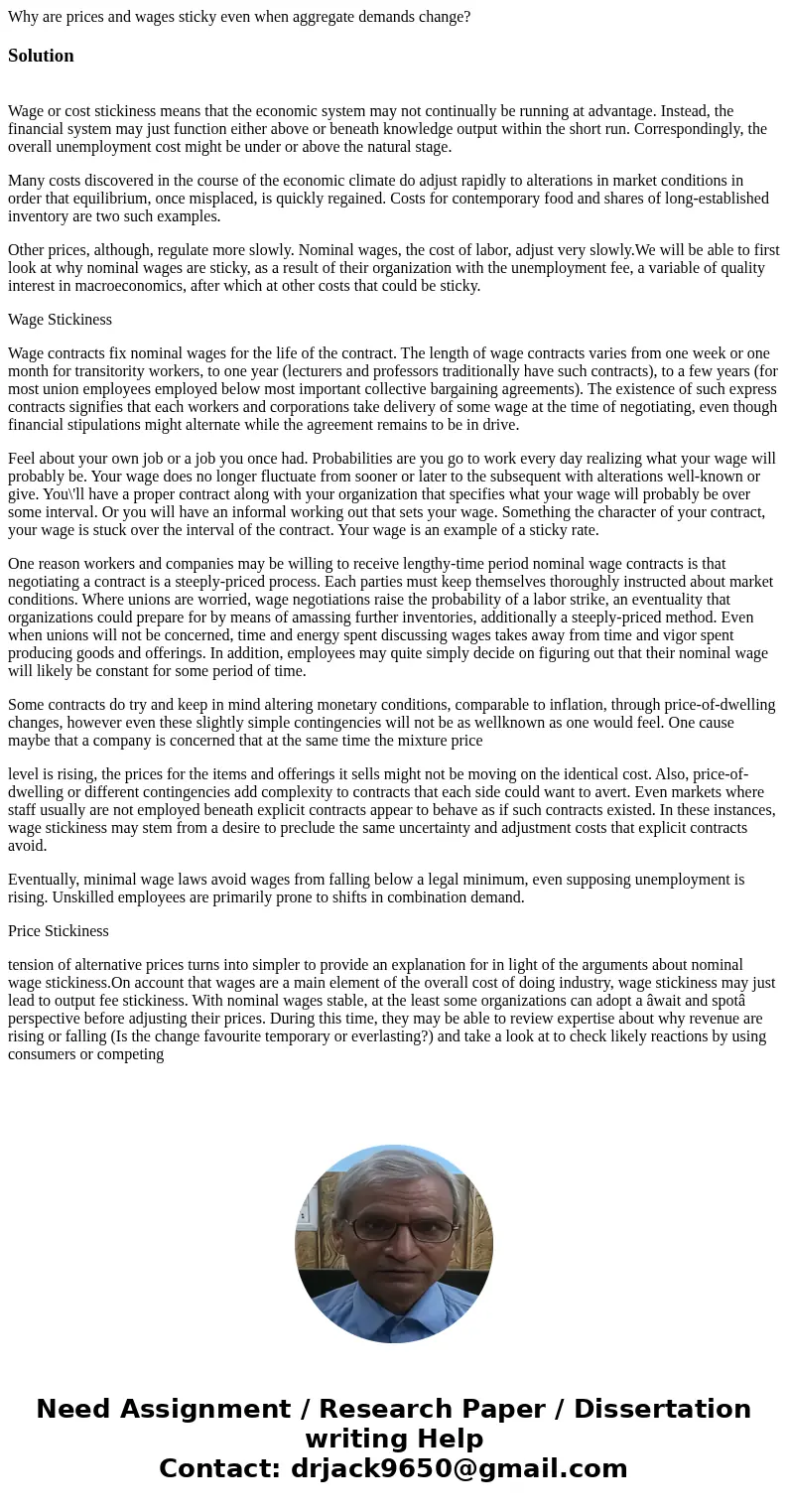Why are prices and wages sticky even when aggregate demands
Why are prices and wages sticky even when aggregate demands change?
Solution
Wage or cost stickiness means that the economic system may not continually be running at advantage. Instead, the financial system may just function either above or beneath knowledge output within the short run. Correspondingly, the overall unemployment cost might be under or above the natural stage.
Many costs discovered in the course of the economic climate do adjust rapidly to alterations in market conditions in order that equilibrium, once misplaced, is quickly regained. Costs for contemporary food and shares of long-established inventory are two such examples.
Other prices, although, regulate more slowly. Nominal wages, the cost of labor, adjust very slowly.We will be able to first look at why nominal wages are sticky, as a result of their organization with the unemployment fee, a variable of quality interest in macroeconomics, after which at other costs that could be sticky.
Wage Stickiness
Wage contracts fix nominal wages for the life of the contract. The length of wage contracts varies from one week or one month for transitority workers, to one year (lecturers and professors traditionally have such contracts), to a few years (for most union employees employed below most important collective bargaining agreements). The existence of such express contracts signifies that each workers and corporations take delivery of some wage at the time of negotiating, even though financial stipulations might alternate while the agreement remains to be in drive.
Feel about your own job or a job you once had. Probabilities are you go to work every day realizing what your wage will probably be. Your wage does no longer fluctuate from sooner or later to the subsequent with alterations well-known or give. You\'ll have a proper contract along with your organization that specifies what your wage will probably be over some interval. Or you will have an informal working out that sets your wage. Something the character of your contract, your wage is stuck over the interval of the contract. Your wage is an example of a sticky rate.
One reason workers and companies may be willing to receive lengthy-time period nominal wage contracts is that negotiating a contract is a steeply-priced process. Each parties must keep themselves thoroughly instructed about market conditions. Where unions are worried, wage negotiations raise the probability of a labor strike, an eventuality that organizations could prepare for by means of amassing further inventories, additionally a steeply-priced method. Even when unions will not be concerned, time and energy spent discussing wages takes away from time and vigor spent producing goods and offerings. In addition, employees may quite simply decide on figuring out that their nominal wage will likely be constant for some period of time.
Some contracts do try and keep in mind altering monetary conditions, comparable to inflation, through price-of-dwelling changes, however even these slightly simple contingencies will not be as wellknown as one would feel. One cause maybe that a company is concerned that at the same time the mixture price
level is rising, the prices for the items and offerings it sells might not be moving on the identical cost. Also, price-of-dwelling or different contingencies add complexity to contracts that each side could want to avert. Even markets where staff usually are not employed beneath explicit contracts appear to behave as if such contracts existed. In these instances, wage stickiness may stem from a desire to preclude the same uncertainty and adjustment costs that explicit contracts avoid.
Eventually, minimal wage laws avoid wages from falling below a legal minimum, even supposing unemployment is rising. Unskilled employees are primarily prone to shifts in combination demand.
Price Stickiness
tension of alternative prices turns into simpler to provide an explanation for in light of the arguments about nominal wage stickiness.On account that wages are a main element of the overall cost of doing industry, wage stickiness may just lead to output fee stickiness. With nominal wages stable, at the least some organizations can adopt a âwait and spotâ perspective before adjusting their prices. During this time, they may be able to review expertise about why revenue are rising or falling (Is the change favourite temporary or everlasting?) and take a look at to check likely reactions by using consumers or competing

 Homework Sourse
Homework Sourse